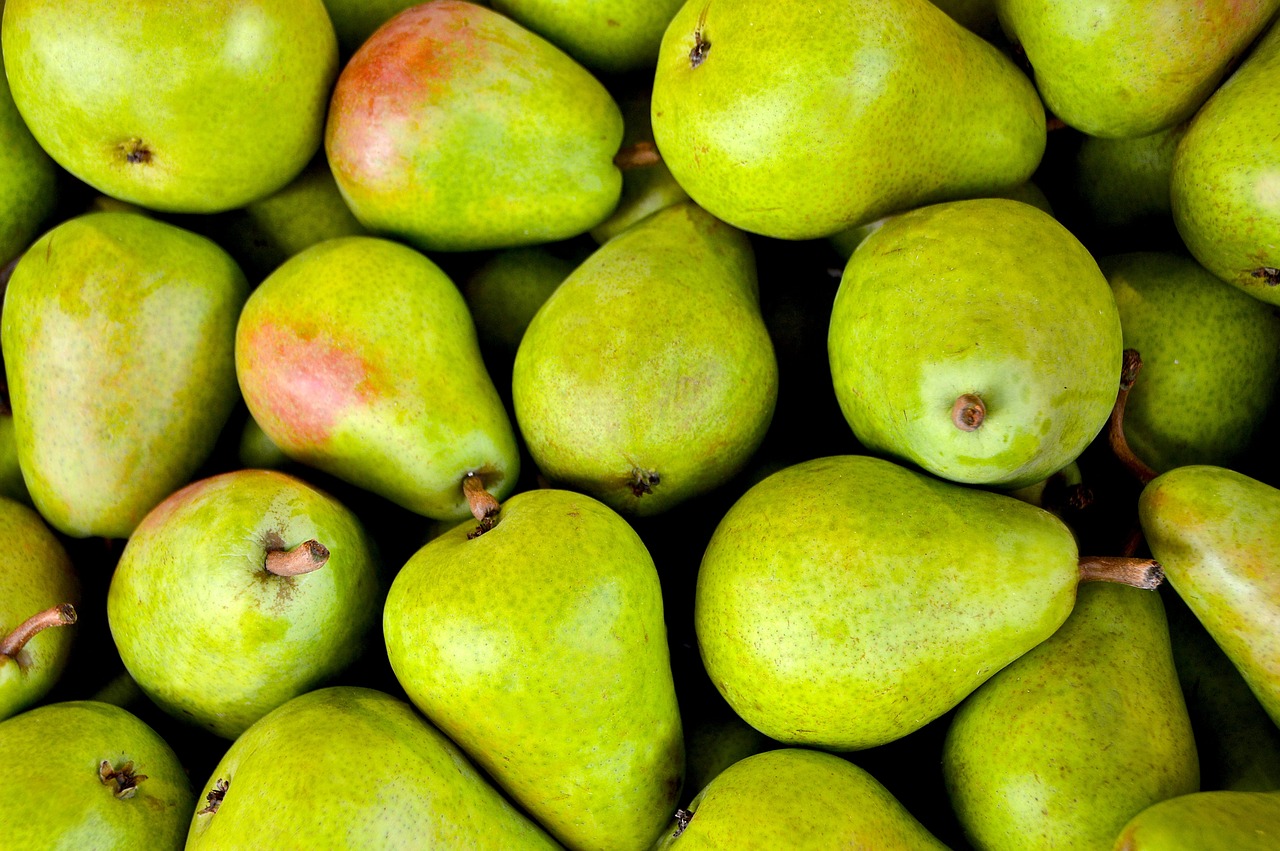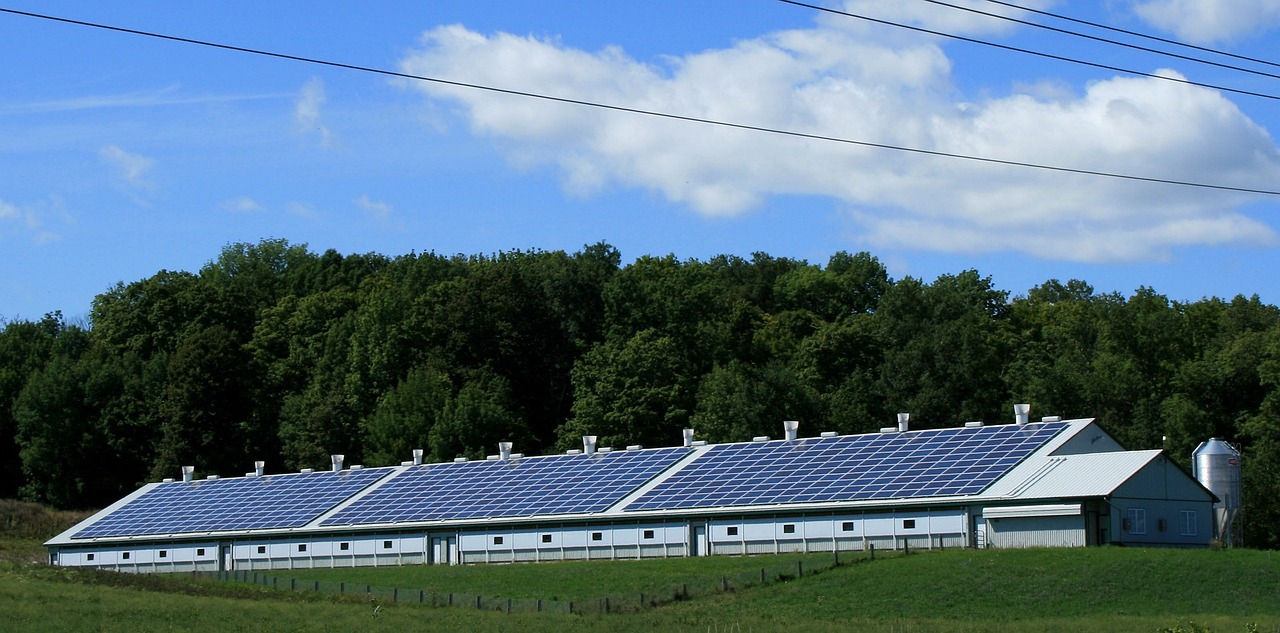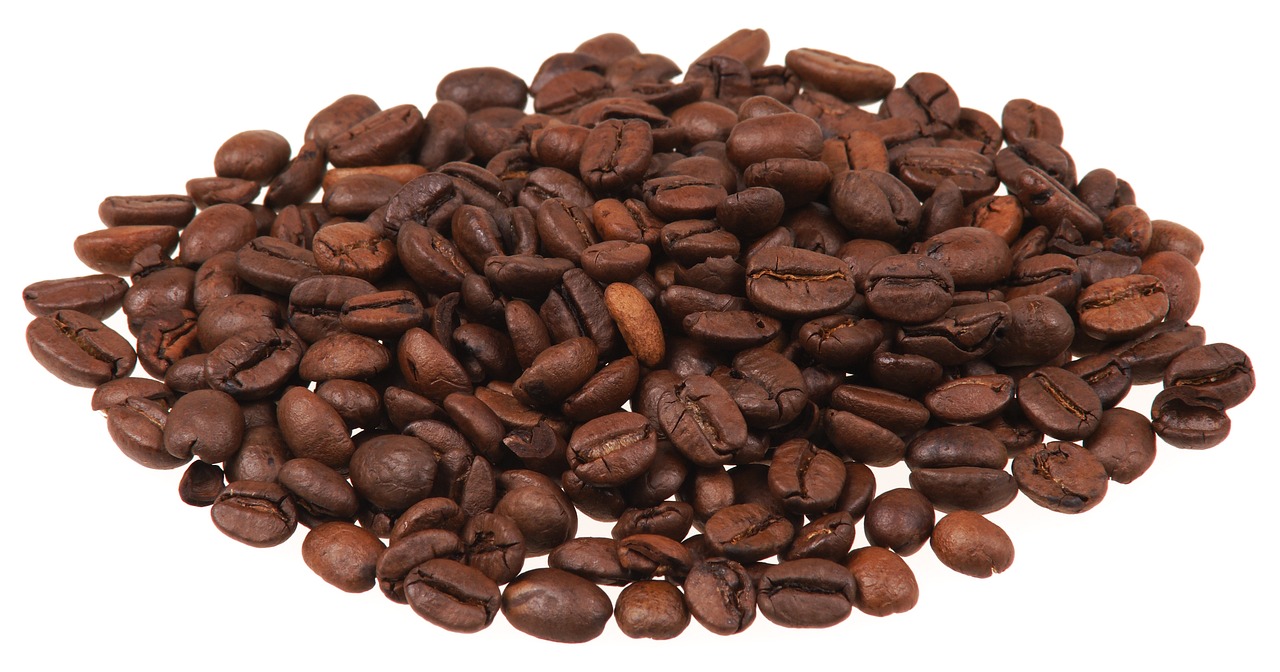How to Make Your Diet More Sustainable?
The journey towards a sustainable diet is not just a trend; it’s a vital step we can all take to ensure a healthier planet for ourselves and future generations. It’s about making conscious food choices that not only nourish our bodies but also protect our environment. So, how can you start making your diet more sustainable? Let’s dive into some practical strategies that can help you on this exciting path!
Sustainable diets are all about balance. They prioritize environmental health, animal welfare, and social equity. Imagine a world where our food systems are not just efficient but also kind to the planet. This means choosing foods that have a minimal impact on our resources and ecosystems. Sustainable eating matters because it addresses critical issues like climate change, biodiversity loss, and food security, ensuring that we leave a thriving planet for generations to come.
One of the simplest yet most impactful ways to enhance the sustainability of your diet is to opt for local and seasonal foods. When you choose produce that’s grown nearby, you significantly reduce your carbon footprint. Think about it: food that travels less distance requires less energy for transportation and packaging. Plus, supporting local farmers strengthens your community's economy. But how do you find these gems? Farmers' markets, community-supported agriculture (CSA) programs, and local grocery stores often showcase seasonal offerings. You might be surprised by the variety available!
Organic farming practices are a cornerstone of sustainable eating. By choosing organic products, you’re supporting methods that promote biodiversity and enhance soil health. Organic farms often use natural fertilizers and pest control methods that help maintain the ecosystem. Additionally, organic food is generally free from synthetic pesticides and fertilizers, making it a healthier choice for you and the planet. When you bite into an organic apple, you're not just enjoying a delicious snack; you're also contributing to a more sustainable agricultural system.
Navigating the world of organic labels can feel like deciphering a secret code. What do all those seals mean? Here’s a quick breakdown of some common organic certifications:
| Label | Description |
|---|---|
| 100% Organic | Products made entirely with organic ingredients. |
| Organic | At least 95% of the ingredients are organic. |
| Made with Organic Ingredients | At least 70% organic ingredients. |
| Organic (on the label) | Less than 70% organic ingredients; can’t use the term “organic” on the front label. |
By understanding these labels, you can make informed choices while shopping for organic foods, ensuring that your selections align with your sustainability goals.
Now, you might be wondering: should I prioritize local foods or organic ones? The answer isn’t always straightforward. If you have access to a local farm that practices sustainable methods, buying local can be a great option. However, if the local produce is conventionally grown and you have the choice of organic from elsewhere, going organic might be the better call for your health and the environment. Ultimately, it’s about weighing factors like availability, cost, and your personal sustainability goals.
Food waste is a colossal issue that contributes to greenhouse gas emissions. In fact, nearly one-third of all food produced globally is wasted! So, what can you do to minimize waste at home? Start with meal planning. By planning your meals for the week, you can avoid overbuying and ensure that everything you purchase gets used. Additionally, proper storage techniques can extend the life of your produce. And don’t forget about those leftovers! Get creative and transform them into new meals—think stir-fries, soups, or even smoothies!
Shifting towards a more plant-based diet is one of the most effective ways to reduce your environmental impact. Plant-based meals typically require fewer resources to produce compared to meat and dairy. Plus, they are rich in nutrients and can be incredibly delicious! Start by incorporating a few meatless meals into your week. Try a hearty lentil soup or a vibrant vegetable stir-fry. You’ll find that the options are endless, and you might just discover new favorites!
With the rise of plant-based diets, there’s an explosion of meat alternatives available today. From tofu to tempeh, and even beyond meat products, the choices can be overwhelming. Each of these options has its own unique nutritional profile and can fit seamlessly into a sustainable diet. For instance, lentils are not only high in protein but also require significantly less water to grow compared to beef. It’s all about finding what works for you and your taste buds!
Believe it or not, the way you cook can also impact sustainability. Opt for cooking methods that conserve energy, such as steaming, pressure cooking, or using a slow cooker. These techniques not only save energy but can enhance the flavor and nutritional value of your meals. Additionally, consider batch cooking to minimize cooking time and energy use throughout the week. The less time you spend in the kitchen, the more time you have to enjoy your delicious, sustainable meals!
- What is a sustainable diet? A sustainable diet is one that prioritizes environmental health, animal welfare, and social equity while providing nutritious food for individuals.
- How can I reduce food waste? You can reduce food waste by meal planning, proper food storage, and creatively using leftovers.
- Are plant-based diets healthier? Plant-based diets are often associated with lower risks of chronic diseases and are generally rich in essential nutrients.

Understanding Sustainable Diets
A sustainable diet is more than just a trend; it’s a way of eating that emphasizes environmental health, animal welfare, and social equity. Imagine your plate as a canvas, where every food choice you make paints a picture of our planet's future. When we talk about sustainability in diets, we're essentially discussing how our food choices affect not only our health but also the world around us. It’s about finding a balance that allows us to nourish ourselves while being mindful of the consequences our eating habits have on the environment.
So, why does this matter? Well, with the alarming rates of climate change, deforestation, and biodiversity loss, the way we eat plays a crucial role in shaping the future. Sustainable diets aim to reduce our carbon footprint by prioritizing foods that are produced with minimal environmental impact. This means opting for foods that are grown locally, in season, and using methods that promote biodiversity. Think of it like this: every time you sit down to eat, you are casting a vote for the kind of food system you want to support.
Moreover, sustainable eating isn’t just about the food itself; it also encompasses the social aspects of food production. This includes fair treatment of workers, supporting local economies, and ensuring that everyone has access to nutritious food. A sustainable diet promotes equity by considering how food choices affect communities, especially those that are marginalized.
To truly understand sustainable diets, let’s break down some of the key principles that guide this way of eating:
- Minimizing Waste: Reducing food waste is vital. This can be achieved through meal planning and proper food storage.
- Choosing Whole Foods: Opting for whole, minimally processed foods not only nourishes your body but also has a lower environmental impact.
- Animal Welfare: Supporting humane farming practices ensures that animals are treated ethically while also producing healthier food options.
- Seasonal Eating: Eating foods that are in season reduces the need for transportation and refrigeration, which significantly cuts down greenhouse gas emissions.
By incorporating these principles into your daily life, you can contribute to a more sustainable food system. It’s not about perfection; it’s about making conscious choices that lead to a healthier planet. Remember, every small change counts! Whether it’s swapping out a beef burger for a veggie one or choosing to buy from local farmers, you’re making a difference.
In conclusion, understanding sustainable diets is about grasping the interconnectedness of our food choices and their impact on the world. It’s a journey of discovery, where each meal can be a step towards a more sustainable future. So, the next time you plan your meals, think about the broader implications of what’s on your plate and how it can contribute to a healthier planet for generations to come.

Choosing Local and Seasonal Foods
When it comes to making your diet more sustainable, one of the most impactful choices you can make is to choose local and seasonal foods. But why does this matter? Well, just think about it: when you buy food that’s grown nearby, you’re not only supporting local farmers but also reducing the carbon footprint associated with transporting food long distances. Imagine the difference if more people opted for fresh, local produce instead of items shipped from halfway around the world!
Seasonal foods are another key player in this sustainability game. Eating with the seasons means you're enjoying fruits and vegetables at their peak flavor and nutritional value. Not to mention, seasonal produce is often less expensive and more abundant. For instance, if you’re in the midst of summer, you’ll find a bounty of tomatoes, zucchini, and berries, all bursting with flavor and nutrients. In contrast, trying to find strawberries in winter might lead you to tasteless, imported varieties that have traveled thousands of miles. It’s a win-win situation: better taste for you and a healthier planet.
So, how can you find these local and seasonal gems? Here are a few tips:
- Visit local farmers' markets: These are treasure troves of fresh produce, often picked just hours before being sold.
- Join a community-supported agriculture (CSA) program: By subscribing to a CSA, you receive a box of seasonal produce directly from a local farm.
- Check out local food co-ops: These organizations often prioritize local suppliers and seasonal offerings.
Additionally, many grocery stores now label their products to indicate whether they are locally sourced. Take a moment to read labels and ask questions. Understanding where your food comes from can deepen your connection to it and inspire you to make more sustainable choices.
Another benefit of choosing local and seasonal foods is the support of local economies. When you buy from local farmers, you’re contributing to the livelihood of your community. This helps create jobs and keeps money circulating within the local economy, which is essential for its growth and sustainability. Plus, local farmers often employ more sustainable farming practices, which can lead to healthier ecosystems.
In summary, opting for local and seasonal foods is not just about what’s on your plate; it’s about making a conscious choice for the environment, your health, and your community. The next time you’re at the grocery store or farmers' market, consider the journey your food has taken and the impact it has on the world around you. By choosing wisely, you can enjoy delicious meals while contributing to a more sustainable future.

The Benefits of Organic Farming
When we talk about organic farming, we’re diving into a world that’s not just about growing food; it’s about nurturing the very fabric of our ecosystem. Organic farming practices are designed to work in harmony with nature, promoting biodiversity and enhancing soil health. This means that when you choose organic, you’re not just making a healthier choice for yourself; you’re also contributing to the well-being of our planet. Isn’t that a win-win?
One of the most significant benefits of organic farming is its emphasis on biodiversity. By avoiding synthetic pesticides and fertilizers, organic farms encourage a diverse range of plants and animals to thrive. This diversity is essential for maintaining healthy ecosystems, as it helps to create a balanced environment where pests are naturally controlled, and pollinators like bees can flourish. Imagine a farm buzzing with life, where every creature plays a role in the greater scheme of things—sounds idyllic, right?
Moreover, organic farming practices improve soil health. Healthy soil is the foundation of any sustainable agriculture system. Organic methods, such as crop rotation, cover cropping, and composting, enhance soil structure and fertility. This not only leads to better yields but also reduces the need for chemical inputs. In fact, studies have shown that organic soils can store more carbon, helping to mitigate climate change. It’s like giving the Earth a big hug!
Let’s not forget about the health benefits. Organic food is often fresher and free from harmful chemicals, which means you’re putting cleaner, safer food on your plate. Research suggests that organic produce may have higher antioxidant levels, which are beneficial for your health. Plus, eating organic supports local farmers and economies, allowing communities to thrive. So, every time you choose organic, you’re not just choosing food; you’re choosing a lifestyle that promotes sustainability and health.
In addition to personal health, organic farming also prioritizes animal welfare. Organic standards require that animals are raised in humane conditions with access to outdoor spaces, fresh air, and organic feed. This approach contrasts sharply with conventional farming methods, where animals may be kept in cramped quarters and treated with antibiotics and hormones. By choosing organic, you’re supporting a system that respects animal rights and encourages ethical treatment.
In summary, the benefits of organic farming are vast and impactful. Here’s a quick recap:
- Biodiversity: Encourages a variety of plants and wildlife.
- Soil Health: Enhances soil fertility and structure.
- Health Benefits: Provides cleaner, chemical-free food.
- Animal Welfare: Supports humane treatment of livestock.
Choosing organic is not just a trend; it’s a commitment to a healthier lifestyle and a more sustainable planet. So next time you’re at the grocery store, consider reaching for that organic label. You’ll be making a choice that benefits not only you but also the world around you.
Q: What is organic farming?
A: Organic farming is an agricultural method that avoids synthetic fertilizers, pesticides, and genetically modified organisms (GMOs), focusing instead on natural processes and sustainability.
Q: Why is organic food more expensive?
A: Organic farming often involves more labor-intensive practices and lower yields, which can lead to higher prices. However, the benefits to health and the environment can outweigh the costs.
Q: Are organic foods healthier than conventional foods?
A: Many studies suggest that organic foods may have higher levels of certain nutrients and lower levels of pesticide residues, making them a healthier choice.
Q: How can I find local organic farms?
A: You can search online directories, visit farmers' markets, or join local community-supported agriculture (CSA) programs to find organic produce near you.

Understanding Organic Labels
When it comes to shopping for organic foods, the array of labels can be downright confusing. You might find yourself staring at a product, wondering what all those certifications really mean and how they impact your choices. Understanding organic labels is crucial for making informed decisions that align with your sustainability goals. Let's break it down!
First off, it's important to know that organic farming is regulated by government bodies, and the labels you see on products indicate different levels of adherence to organic standards. Here are some common labels you might encounter:
- 100% Organic: This label means that every ingredient in the product is organic. If you see this label, you can be confident that you're getting a product that's entirely free from synthetic fertilizers and pesticides.
- Organic: Products with this label contain at least 95% organic ingredients. The remaining 5% can be non-organic, but they must be on an approved list.
- Made with Organic Ingredients: If you see this label, it means that at least 70% of the ingredients are organic. However, the remaining 30% can be conventional ingredients.
- Organic (on the front label): This label can be a bit misleading. It may not necessarily mean that the product is entirely organic, so always check the ingredient list for clarity.
Understanding these labels not only helps in making better choices for your health but also supports sustainable farming practices. When you opt for organic products, you're not just choosing food; you're choosing to support a system that promotes biodiversity, soil health, and animal welfare.
Another aspect to consider is the importance of local organic farms. While organic produce is great, buying from local farmers who practice organic methods can amplify the benefits. Local products often have a smaller carbon footprint since they don’t have to travel long distances to reach your plate. Plus, supporting local farmers helps strengthen community ties and keeps the economy thriving.
It’s also worth noting that organic labels can vary by country. For instance, in the United States, the USDA regulates organic labeling, while in Europe, the EU has its own set of regulations. This means that a product labeled as organic in one country might have different standards than in another. Always do a bit of research if you're unsure!
In summary, understanding organic labels is a vital part of navigating the grocery store. By familiarizing yourself with what these labels mean, you can make choices that are not only good for your health but also beneficial for the planet. So the next time you're shopping, take a moment to read the labels and feel empowered in your choices!
Q: What does 'organic' mean?
A: 'Organic' refers to the way agricultural products are grown and processed, emphasizing the use of natural substances and methods. It typically means no synthetic fertilizers or pesticides are used.
Q: Are organic foods healthier than non-organic?
A: While organic foods are often fresher and free from harmful chemicals, the nutritional differences can be minimal. However, organic farming practices are better for the environment and animal welfare.
Q: Can I find organic food at regular grocery stores?
A: Yes! Many grocery stores now carry a variety of organic products, from fresh produce to packaged goods. Look for the organic labels mentioned above.
Q: Is organic food more expensive?
A: Generally, organic foods can be more expensive due to the stricter regulations and labor-intensive practices involved in organic farming. However, buying in bulk or shopping at local farmers' markets can help reduce costs.

Local vs. Organic: What to Choose?
When it comes to making sustainable food choices, the debate between local and organic foods often arises. Both options have their unique benefits, and understanding these can help you make informed decisions that align with your sustainability goals. So, what should you prioritize? Let’s break it down.
Choosing local foods means supporting your community and reducing the carbon footprint associated with transportation. When you buy from local farmers, you're not just getting fresher produce; you're also contributing to the local economy and fostering a sense of community. Local foods are often harvested at peak ripeness, which can enhance their flavor and nutritional value. However, the term "local" can vary—some define it as within a few miles, while others consider anything from the same state as local.
On the other hand, organic foods are grown without synthetic pesticides, fertilizers, or genetically modified organisms (GMOs). This means that when you choose organic, you're opting for a product that is generally better for the environment and your health. Organic farming practices promote biodiversity, improve soil health, and reduce pollution. However, organic products can sometimes come with a higher price tag, which might not be feasible for everyone.
So, how do you decide? Here are a few factors to consider:
- Availability: If you live in an area with limited access to organic options, local produce may be the better choice.
- Cost: Organic foods can be pricier. If budget constraints are a concern, local options may provide more affordable alternatives.
- Seasonality: Depending on the time of year, local seasonal produce may be fresher and more nutritious than organic options that have been transported long distances.
Ultimately, the best choice may not be strictly local or organic but rather a combination of both. You can prioritize local foods when they are in season and supplement with organic choices when necessary. This balanced approach allows you to support local farmers while also opting for healthier, environmentally-friendly products. Remember, every little choice counts, and by being mindful of your food sources, you are contributing to a more sustainable future.

Reducing Food Waste
Food waste is not just a personal inconvenience; it’s a significant environmental issue that affects our planet's health. Did you know that nearly one-third of all food produced globally is wasted? That's a staggering statistic! When we throw away food, we’re not just discarding the meal itself but also wasting the resources that went into producing it, including water, energy, and labor. So, how can we tackle this problem in our own kitchens? Let's dive into some practical strategies that can help you minimize food waste and make a positive impact.
First and foremost, meal planning is a game-changer. Taking a little time each week to plan your meals can significantly reduce how much food you end up throwing away. Think of it as mapping out your culinary journey for the week. By making a list of the meals you want to prepare, you can buy only what you need, ensuring that everything you purchase gets used. You can even create a fun theme for your meals, like "Meatless Mondays" or "Taco Tuesdays," to keep things exciting and fresh!
Next, let’s talk about proper storage. Understanding how to store your groceries can extend their shelf life and keep them from spoiling too quickly. For instance, did you know that keeping your apples in the fridge can help them last longer? Or that herbs can be stored in water like a bouquet for maximum freshness? Investing in reusable storage containers can also help you organize your fridge and keep track of what you have. When you can see what’s there, you’re less likely to forget about that half-eaten salad or leftover stir-fry.
Another effective way to reduce food waste is to get creative with your leftovers. Instead of letting that extra rice sit in the fridge until it becomes a science experiment, think of it as an opportunity. Leftover rice can be transformed into fried rice, rice pudding, or even added to soups for extra texture and nutrition. The key is to change your mindset about leftovers; they are not just remnants of yesterday’s meal, but rather the foundation for tomorrow’s culinary adventure!
Lastly, consider composting. If you find yourself with scraps that you can’t use, composting is a fantastic way to turn waste into something beneficial. By composting fruit and vegetable peels, coffee grounds, and eggshells, you can create nutrient-rich soil for your garden or houseplants. It’s like giving back to the earth what it has given you, closing the loop in the food cycle. Plus, it reduces the amount of waste that ends up in landfills, which is a win-win for everyone!
- What is the best way to plan meals to reduce waste? Start by assessing what you already have in your pantry and fridge, then plan meals around those ingredients. Make a shopping list to avoid impulse buys.
- How can I tell if food is still good to eat? Always check for signs of spoilage, such as unusual smells, colors, or textures. When in doubt, trust your senses!
- What can I do with food scraps? Many scraps can be composted, but you can also use them to make vegetable broth or as ingredients in smoothies.

Incorporating Plant-Based Meals
In today's world, where environmental concerns are at the forefront of our minds, into our diets is not just a trend; it's a necessity. But what does it really mean to embrace a plant-based lifestyle? It’s not about completely giving up your favorite foods but rather about making smarter choices that benefit both your health and the planet. Imagine your plate filled with vibrant colors, fresh vegetables, and hearty grains—sounds delicious, right? Not only do these meals offer a burst of flavor, but they also come with a plethora of health benefits.
Research has shown that plant-based diets can lead to lower risks of chronic diseases such as heart disease, diabetes, and certain cancers. Plus, they often promote a healthier weight and improve digestion. But how can you start incorporating these meals into your daily routine? The key is to begin with small changes. Start by replacing one or two meals a week with plant-based options. For instance, swapping out meat for beans or lentils in your tacos or pasta can be a game changer. Not only does this reduce your carbon footprint, but it also opens up a world of flavors and ingredients you may not have tried before.
Here are some simple yet effective ways to incorporate more plant-based meals into your diet:
- Experiment with Meatless Mondays: Dedicate one day a week to enjoy meals without meat. It’s a fun challenge that can inspire creativity in the kitchen!
- Explore New Recipes: There are countless recipes online that showcase delicious plant-based meals. From hearty stews to refreshing salads, the options are endless.
- Incorporate Whole Grains: Foods like quinoa, brown rice, and barley are not only filling but also packed with nutrients. They can serve as a great base for a variety of dishes.
Additionally, don't overlook the power of spices and herbs! They can transform a simple vegetable dish into a culinary masterpiece. Think of spices as the paint on your canvas; they bring life and excitement to your meals. For example, adding cumin and coriander to roasted chickpeas can elevate them from ordinary to extraordinary.
Another exciting aspect of plant-based eating is the growing availability of plant-based products in grocery stores. From plant-based burgers to dairy alternatives, these products make it easier than ever to enjoy your favorite meals while adhering to a more sustainable diet. However, it’s essential to read labels and choose products that are minimally processed and contain wholesome ingredients. Remember, while these products can be a great addition, they shouldn't replace whole foods entirely.
To make the transition smoother, consider meal prepping. Preparing meals in advance can save you time during the week and keep you on track with your plant-based goals. You can batch cook grains, chop vegetables, and even prepare sauces to simplify your cooking process. This way, when you're hungry, you have delicious, healthy options readily available.
Ultimately, incorporating plant-based meals into your diet doesn't have to be overwhelming. Start small, explore new flavors, and enjoy the journey. You'll likely find that not only do you feel better physically, but you also contribute to a more sustainable future for our planet. So, why not give it a try? Your taste buds and the Earth will thank you!
1. Do I have to give up meat completely to eat plant-based?
No, you can start by gradually reducing your meat intake and replacing it with plant-based options. It's about finding a balance that works for you.
2. What are some easy plant-based meal ideas?
Some easy ideas include vegetable stir-fries, lentil soups, chickpea salads, and smoothies loaded with fruits and greens.
3. Are plant-based diets expensive?
Not necessarily. While some specialty plant-based products can be pricey, focusing on whole foods like grains, beans, and seasonal vegetables can be very cost-effective.
4. Can I get enough protein from a plant-based diet?
Absolutely! There are plenty of plant-based protein sources, such as beans, lentils, tofu, quinoa, and nuts.

Exploring Meat Alternatives
In recent years, the world has witnessed a remarkable shift in dietary preferences, with many individuals opting for meat alternatives as a way to embrace a more sustainable lifestyle. But what exactly are these alternatives, and why should you consider incorporating them into your meals? Meat alternatives are not just a trend; they represent a transformative approach to eating that can significantly reduce your carbon footprint while still providing the essential nutrients your body craves.
One of the most exciting aspects of exploring meat alternatives is the sheer variety available. From plant-based proteins like lentils, chickpeas, and quinoa to innovative products such as Beyond Meat and Impossible Burger, the options are endless. These alternatives not only mimic the taste and texture of meat but also offer a plethora of health benefits. For instance, many plant-based proteins are rich in fiber, vitamins, and minerals, which can contribute to better digestive health and overall well-being.
Moreover, choosing meat alternatives can have a profound impact on the environment. According to studies, the production of plant-based proteins generally requires significantly less water and land compared to traditional meat production. For example, producing a pound of beef can use up to 1,800 gallons of water, while a pound of lentils requires only about 600 gallons. This stark contrast highlights the importance of making informed food choices that align with our sustainability goals.
When it comes to nutrition, many meat alternatives stand out as excellent sources of protein. Here’s a quick comparison of some popular options:
| Meat Alternative | Protein Content (per 100g) | Calories | Fiber |
|---|---|---|---|
| Chickpeas | 8.9g | 164 | 7.6g |
| Quinoa | 4.1g | 120 | 2.8g |
| Tofu | 8.1g | 76 | 0.3g |
| Beyond Burger | 20g | 250 | 3g |
As you can see, there is a wealth of protein-rich options available that can easily replace conventional meat in your diet. However, it’s essential to pay attention to nutritional balance. While meat alternatives can be healthy, some processed options may contain added sugars or unhealthy fats. Always check the labels and opt for products that prioritize whole, natural ingredients.
Transitioning to meat alternatives doesn’t have to be overwhelming. Start by incorporating them into your favorite dishes. For instance, you can add chickpeas to salads, use lentils in stews, or swap ground beef for a plant-based burger in your next barbecue. By gradually experimenting with these alternatives, you’ll discover new flavors and textures that can enrich your meals.
In conclusion, exploring meat alternatives is not just a dietary choice; it's a step towards a more sustainable future. By embracing these options, you not only contribute to a healthier planet but also enhance your personal health. So, why not give it a try? Your taste buds and the Earth will thank you!
- What are some easy ways to start incorporating meat alternatives into my diet? Begin by substituting meat in your favorite recipes with plant-based proteins like beans, lentils, or tofu.
- Are meat alternatives as nutritious as meat? Many meat alternatives provide comparable or even greater amounts of protein, fiber, and essential nutrients, but it's important to check the nutritional content.
- Can I find meat alternatives in my local grocery store? Yes! Most grocery stores now carry a variety of meat alternatives, including plant-based burgers, sausages, and more.

Cooking Methods for Sustainability
When it comes to making our diets more sustainable, the cooking methods we choose can play a significant role. It's not just about what we eat, but also how we prepare our meals that can either help or hinder our environmental efforts. Think of cooking as the bridge between raw ingredients and delicious meals; the way we cross that bridge can either leave a heavy footprint or tread lightly on the planet.
One of the simplest yet most effective ways to cook sustainably is by using energy-efficient techniques. For instance, methods like steaming, sautéing, or using a slow cooker can save energy compared to traditional oven baking. Not only do these methods conserve energy, but they also often enhance the flavor and nutritional value of the food. Steaming vegetables, for example, helps retain more vitamins and minerals compared to boiling them in water.
Additionally, consider the size of your cooking appliances. Using smaller appliances, such as a toaster oven or an air fryer, can be more energy-efficient than heating up a large oven for a small meal. You might be surprised to learn that a toaster oven uses about half the energy of a conventional oven. This small change can lead to significant energy savings over time, which is a win-win for both your wallet and the Earth!
Another important aspect of sustainable cooking is batch cooking. Preparing larger quantities of meals at once not only saves time but also reduces energy consumption. When you cook in batches, you can utilize the oven or stove more efficiently, minimizing the number of times you need to heat up these appliances. Plus, it allows you to create a variety of meals that can be stored and enjoyed throughout the week, reducing the temptation to rely on takeout or pre-packaged foods.
Moreover, consider the impact of local and seasonal ingredients on your cooking methods. When you use fresh, local produce, you're not just supporting local farmers; you're also reducing the energy involved in transporting food long distances. This means less fuel consumption and fewer emissions. To further enhance sustainability, try to incorporate more plant-based meals into your cooking routine. Plant-based diets generally require less energy and resources compared to meat-heavy diets, making them a more sustainable choice.
Lastly, let’s talk about cleaning up after cooking. Sustainable cooking doesn’t stop when the meal is served. Using eco-friendly cleaning products and methods can further reduce your environmental impact. Opt for natural cleaning solutions like vinegar and baking soda, which are not only effective but also safer for the environment. And remember, washing dishes in a basin rather than letting the water run can save gallons of water!
In summary, adopting sustainable cooking methods is about being mindful of the energy we use, the ingredients we choose, and the waste we create. By making small, intentional changes in our cooking practices, we can significantly reduce our environmental footprint while still enjoying delicious, nutritious meals. So, next time you step into the kitchen, think about how your cooking choices can contribute to a healthier planet!
- What are the most sustainable cooking methods? Energy-efficient techniques such as steaming, sautéing, and using smaller appliances are among the best choices.
- How can I reduce food waste while cooking? Batch cooking and proper meal planning can help minimize waste.
- Why is it important to use local ingredients? Local ingredients reduce transportation emissions and support local economies.
- Can I still enjoy meat in a sustainable diet? Yes, incorporating plant-based meals and reducing meat consumption can create a more sustainable diet.
Frequently Asked Questions
- What is a sustainable diet?
A sustainable diet is one that prioritizes the health of the environment, animal welfare, and social equity. It focuses on food choices that minimize environmental impact while promoting personal health and well-being. By making informed decisions about what we eat, we can help ensure a healthier planet for future generations.
- Why should I choose local and seasonal foods?
Choosing local and seasonal foods helps reduce your carbon footprint and supports local farmers and economies. When you eat foods that are in season and grown nearby, they typically require less transportation, which means fewer greenhouse gas emissions. Plus, local produce is often fresher and tastier!
- What are the benefits of organic farming?
Organic farming practices promote biodiversity, enhance soil health, and reduce pollution from synthetic fertilizers and pesticides. By choosing organic products, you not only support environmentally friendly practices but also contribute to healthier ecosystems and potentially better nutrition for yourself.
- How do I understand organic labels when shopping?
Navigating organic labels can be tricky, but it's important to look for certifications like USDA Organic, which indicates that the product meets strict organic standards. Familiarize yourself with various labels, such as "100% Organic" or "Made with Organic Ingredients," to make informed choices that align with your sustainability goals.
- Should I choose local or organic foods?
Choosing between local and organic foods depends on factors like availability, cost, and your personal sustainability priorities. If local produce is available and grown sustainably, it can be a great choice. However, if you're concerned about pesticide use, organic options might be more suitable. Consider balancing both in your diet!
- How can I reduce food waste at home?
Reducing food waste can be achieved through meal planning, proper food storage, and creatively using leftovers. Start by making a shopping list based on your meal plan to avoid buying unnecessary items. Store food correctly to extend its shelf life, and get creative with leftovers by transforming them into new dishes!
- What are the benefits of incorporating plant-based meals?
Plant-based meals are associated with lower environmental impacts and can be rich in nutrients. They often require fewer resources to produce compared to animal products. Incorporating more plant-based meals into your diet can improve your health, reduce your carbon footprint, and introduce you to a variety of delicious foods!
- What are some popular meat alternatives?
There are many meat alternatives available, such as tofu, tempeh, seitan, and various plant-based burgers. These options can provide similar textures and flavors to meat while offering different nutritional benefits. Experimenting with these alternatives can help you find tasty ways to reduce your meat consumption.
- How do cooking methods affect sustainability?
The way we cook can significantly influence sustainability. Using energy-efficient cooking methods, such as steaming or using a slow cooker, can conserve energy and resources. Additionally, cooking in bulk and using leftovers creatively can help minimize waste while maximizing flavor and nutrition!



















